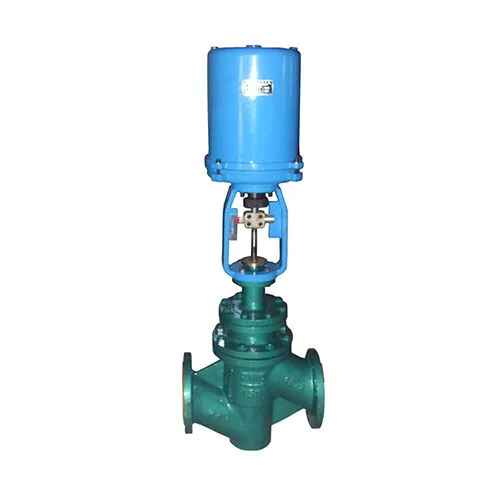Common Pressure Regulation Methods of Electric Control Valves
Electric control valves are essential components in industrial automation systems, used extensively to regulate fluid flow and pressure by adjusting the valve opening through electric actuators. Among various control strategies applied to these valves, pressure control stands out as a critical function, ensuring precise management of pressures in diverse industrial processes. This article explores several prominent methods of pressure control employed with electric control valves.
1. PID Control
PID (Proportional-Integral-Derivative) control is a widely adopted method for pressure control in electric control valves. It operates by comparing the actual pressure with the setpoint and adjusting the valve opening based on three parameters:
- Proportional (P): Determines the adjustment of valve opening in relation to pressure deviation.
- Integral (I): Controls the rate of adjustment of the valve opening to eliminate steady-state errors.
- Derivative (D): Enhances system stability by anticipating future trends based on the rate of change of the pressure error.
- PID control offers stable pressure control performance but requires meticulous tuning to optimize parameter settings and prevent oscillations.
2. ON/OFF Control
ON/OFF control is a straightforward binary control method where the valve is either fully open or fully closed based on the comparison between actual pressure and the setpoint. Specifically:
- The valve closes when the actual pressure exceeds the setpoint to prevent overpressure.
- It opens when the actual pressure falls below the setpoint to increase fluid flow.
- While simple to implement, ON/OFF control may lead to frequent valve switching, potentially affecting valve longevity and system stability, particularly in applications requiring precise control.
3. Fuzzy Control
Fuzzy control utilizes fuzzy logic theory to manage systems with vague inputs and rules. In pressure control of electric control valves, fuzzy logic adjusts the valve opening based on fuzzy relationships between actual pressure and the setpoint. Key attributes include:
- Ability to handle uncertain system environments and fuzzy input parameters.
- Requires well-defined fuzzy sets and rules to ensure effective control performance and stability.
4. Adaptive Control
Adaptive control adjusts control parameters automatically based on real-time system conditions. In pressure control of electric control valves, adaptive control dynamically adjusts proportional, integral, and derivative parameters in response to changes in actual pressure. Features include:
- Adaptation to variations in system parameters, ensuring precise and stable control performance.
- Continuous monitoring and optimization of control algorithms to maintain consistent system response and performance.
5. Predictive Control
Predictive control relies on mathematical models to predict future system states and adjusts control parameters accordingly. In pressure control of electric control valves, predictive control forecasts the difference between actual and setpoint pressures based on system models, thereby finely adjusting the valve opening. Notable advantages include:
- Faster response times and higher control accuracy, suitable for applications demanding stringent control requirements.
- Requires accurate system models and robust computational capabilities to support predictive calculations effectively.
In conclusion, electric control valves offer a range of pressure control strategies, each tailored to specific industrial applications and system requirements. The selection and proper application of these control strategies are crucial for enhancing system stability, precision, and efficiency, thereby meeting the high demands of fluid control in industrial production processes.
